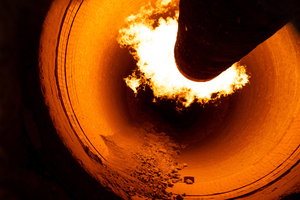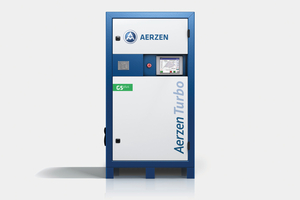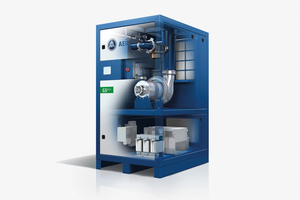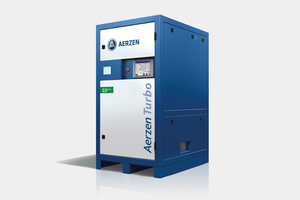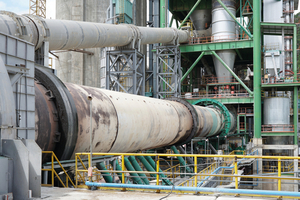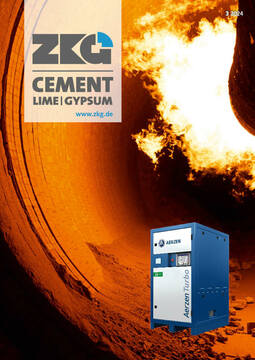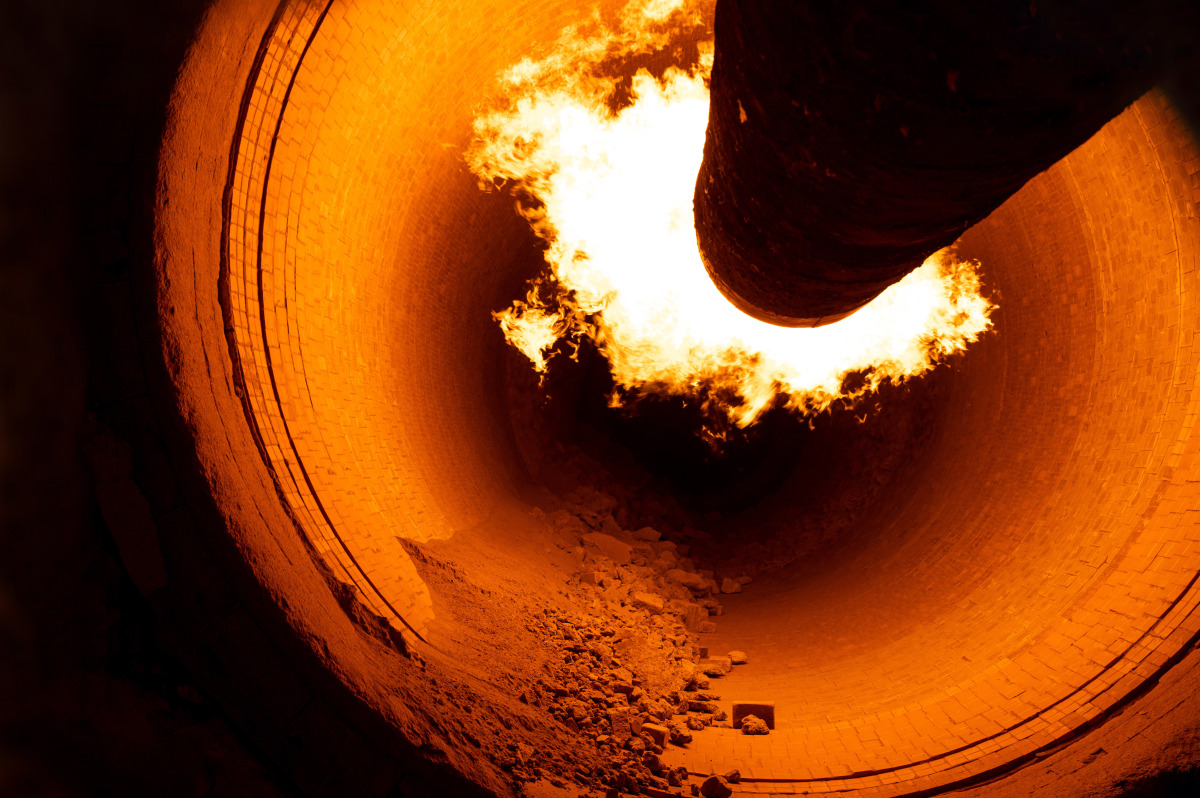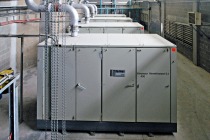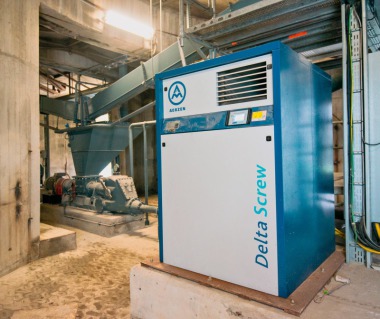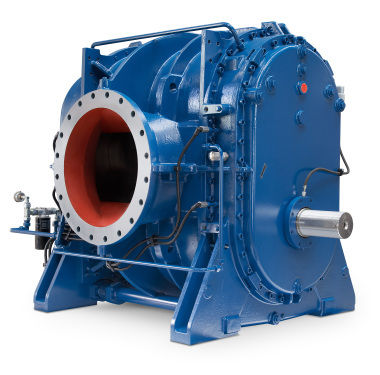Economy meets ecology: Aerzen turbo blowers in the cement and lime industry
Greater climate friendliness is one of the most ambitious goals of the energy-intensive cement and lime industry. As a long-standing partner, Aerzen is very familiar with the enormous challenges currently facing the industry and realises resource-saving and environmentally friendly solutions. Innovative developments such as turbo technology enable energy savings of up to 30% compared with conventional positive displacement blowers and support the cement and lime industry on the path to climate neutrality.
Climate protection and energy costs equally under control
Cement is one of the most popular and important building materials. But production is extremely energy-intensive, and the cement industry is one of the biggest producers of CO2 emissions. In 2020, 4.1 billion t of cement were produced worldwide. In the process, 2.17 billion t of CO2 were released into the atmosphere, which corresponds to a share of 8% of the total global CO2 production. For comparison: air transport accounts for approximately 3%. If we look at the largest carbon dioxide emitters in German industry, the cement industry is in third place with 20% – after iron and steel production (37.9%) and refineries (24.0%), followed in fourth place by the chemical industry (17.8%). If we add lime as another important building material, the cement and lime industry is responsible for 27.4% of the industry’s CO2 emissions and thus occupies second place in the ranking. The industry has been aware of the problem for quite some time and is now working on becoming more climate-friendly. The goal: reduction of CO2 emissions by 25% by 2030 and achieving climate neutrality by 2050.
Unique portfolio of innovative blower and compressor solutions
As a long-term partner of the cement industry, Aerzen knows exactly the diverse challenges and supports the industry in its ambitious goals. The highly efficient, oil-free and low-maintenance blower and compressor solutions from the compressor specialist ensure reliable and safe processes and have established themselves around the globe in numerous areas of cement and lime production, whether in the fields of pneumatic conveying, aeration, silo loosening, packaging or cooling and combustion.
Energy-intensive clinker production
The production of cement clinker is particularly energy-intensive. The burning process in the rotary kiln, in which the ground raw materials – limestone, clay, marl and others – are heated at temperatures of 1450 °C and fused together and then cooled down again, accounts for 90% of a cement plant’s total energy demand. One part of the energy costs is spent on the generation of process air for cooling and combustion.
The cooling and combustion air supply offers high optimisation potential
Oxygen supply is one of the most critical applications in cement production, as a turbulent and large air flow is required to transfer all the heat generated by the burner along the kiln and preheater tower. As a rule, positive displacement blowers provide the required cooling and combustion air. Positive displacement blowers optimally meet the application-specific requirements: high volume flow rates at low pressures of 400 to 500 mbar. These blowers are comparatively low-priced in purchase. In some cases, screw blowers of the Delta Hybrid type are also used. However, as these machines work according to the principle of internal compression, they are only profitable from a pressure range of at least 500 / 550 mbar.
Focus on efficiency and sustainability
“The choice of the solution used is always a trade-off between energy efficiency and investment costs – up to now in favour of the positive displacement blowers. However, in view of the increasing relevance of the topic of energy efficiency due to rising energy prices as well as global climate targets, it is worthwhile to broaden one’s view and consider more efficient technologies - for example, turbo blowers,” says Stephan Brand, Director Turbo Business at Aerzen, and makes clear: “Although the initial investment costs for a turbo blower are higher than for a positive displacement blower, the turbo machines are way ahead in terms of energy efficiency, keeping the life cycle costs low - a clear competitive advantage.”
Aerzen Turbo: Specialist for combustion air
Aerzen has been building turbo blowers since 1911 and has continued to push these packages to the cutting edge of technology over many decades. Today the G5plus turbo blower series is among the most compact and efficient turbos in its class. “Compared to conventional turbo technology, the energy efficiency is up to 10% higher, and compared to displacement machines, such as positive displacement blowers, savings of up to 30% can even be achieved,” Stephan Brand points out. This can be accomplished by highly efficient individual components, such as the extremely powerful and energy-saving permanent magnet motor, which meets the future requirements of the IE5 classification (Ultra Premium Efficiency) thanks to the particularly aerodynamic design with turbo impeller and spiral casing and the innovative multi-level frequency inverter technology with up to 90% less power loss in the motor compared to conventional converter technology. Speed control is required in the cooling and combustion air area, as the volume flow varies. Compared to turbo blowers with standard inverters, the turbo packages from Aerzen are less sensitive to pressure fluctuations and have a better control behaviour. As a result, Aerzen Turbo packages can be operated far more stably throughout the entire turbo performance range.
Compact design, long service life, quiet operation
In addition, the turbo machines made by Aerzen score with further features, which are advantageous for cement and lime production. Thanks to the compact design, the machine footprint is extremely low. For example, a turbo machine requires only a third or a quarter of the footprint of a positive displacement blower with comparable performance. As a result, the machine room can be a lot smaller. The innovative Aerzen air foil bearing with double coating ensures an increased service life of > 80000 operating hours and maximum reliability. State-of-the-art air filter solution systems ensure optimal operation, even in highly contaminated environments. The packages are sound-optimised and guarantee a quiet operation of 72-73 dB(A). In addition, the powerful turbo blowers are 100% oil-free, incredibly robust and easy to operate. The maintenance requirement is extremely low.
Best energy efficiency with smallest machine footprint
Low energy and maintenance costs, absolutely oil-free, high process stability, compact dimensions: With the Aerzen Turbo, compressor specialist Aerzen provides a future-proof technology within its product range, which stands for efficiency, sustainability and reliability. Features that no other package can offer to this extent. “The switch from positive displacement blowers to the state-of-the-art turbo machines opens up considerable efficiency and performance advantages for the cooling and combustion air supply in the cement and lime industry,” Stephan Brand emphasises and adds: “The results are more sustainable processes, optimised performance and reduced costs.”

